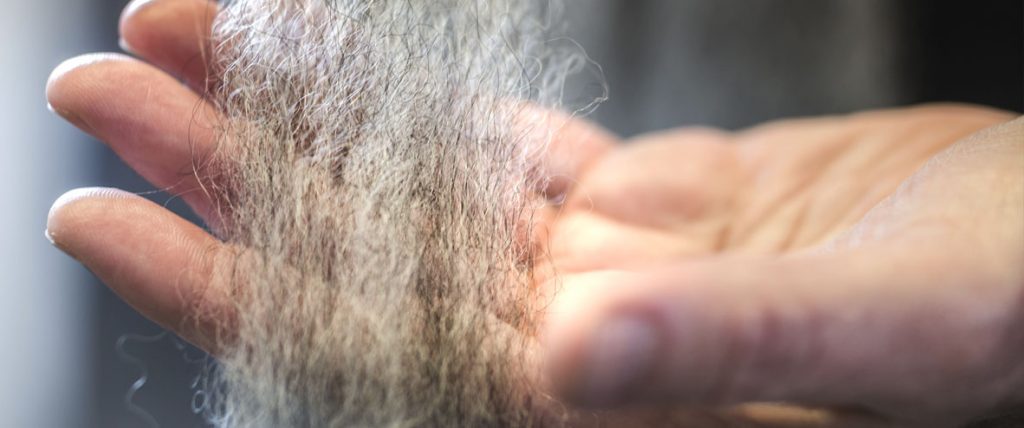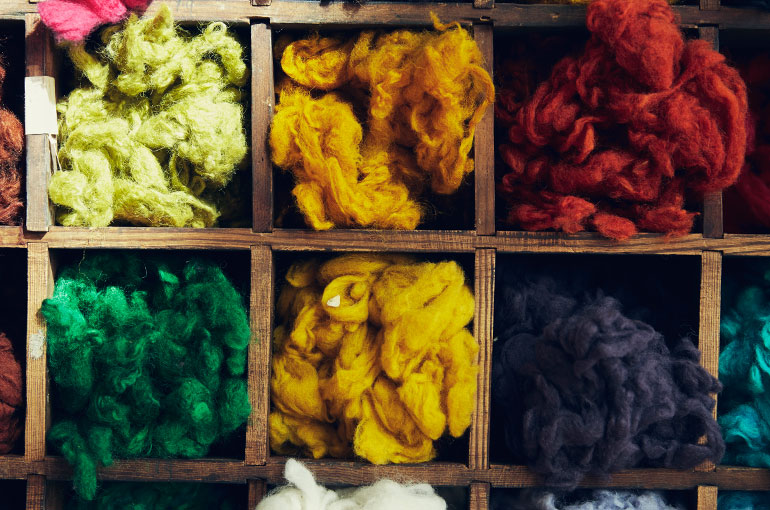The future of wool production
The most important reasons why we love to use wool and where the future of wool production is heading.
Wool as a material is nothing less than fascinating. Wool has a rich history spanning 10.000 years. It also has a strong future ahead of it and is an essential material for us at Fjällräven. That is not just because of wool’s inherent properties as a wildly functional material but also because it is easier to recycle than other materials, and it is hugely diverse in its potential use.
Caring for sheep

Sheep were some of the first animals to be domesticated some 10.000 years ago in Mesopotamia. Different societies has seen different values in these animals and therefore, they have been bred with different properties. Nowadays we can find all kinds of different sheep, and wool types, around the globe. But one thing that all wool has in common is that is important to know where the material truly comes from. We need to know that the sheep have been treated ethically. As Erik Blomberg, Head of Innovation at Fjällräven says, “For the wool we buy in Sweden it’s easy. The farms are just half a day drive away from us. For the wool we buy in New Zealand and Australia we work with ZQ wool - this means that there are contracts in place with the farms and we can visit them when needed.”

But the road to fully traceable wool products is not so straightforward. Normally, sheared and sorted wool is collected from a number of farms, scoured or washed in big batches and then traded on a global market. Fjällräven traceable wool is collected from a number of nominated farms which fulfil the strict requirements of ZQ. This wool is then scoured and spun into yarn without being mixed with wool from other sources. The wool is then made into different types of yarns for different applications. As Erik adds, “Our goal is that all wool we buy is traceable, some wool types has been fairly easy to source while others have been harder.” But things are changing and, most importantly, we are moving in the right direction on the road to a fully traceable global wool supply for all Fjällräven products.
Functionality
Wool is a hugely functional material. It has great insulating properties and it handles moisture in a unique way. The fibres built up by proteins can store a large amount of water inside them, without loosing any insulating capacity. Due to the water being trapped inside the fibre the environment needed for bacteria to grow cannot be created. This reduces the risk of odour. Wool is a natural fibre - which means it is biodegradable - but it is also a very durable fibre. In general, it is still weaker than synthetic fibres. Erik’s advice for the best care of your wool products is to “not wash them as often. Due to the inherent anti-odour properties of wool - they don’t need washing as often as synthetic fibres. A handy tip is to hang your products out to ventilate instead. Or if your favourite sweater starts to break at the elbows - hand sew on a fabric patch, and you will love it even more.”

Environmental Impact
One of the main goals at Fjällräven is always to make products with as little environmental impact as possible. They should be long-lasting, possible to repair and at the end of life easy to recycle. We are also striving to use more renewable material in our products. As Erik says “wool ticks all the boxes of being a good renewable material with functional properties that we can use in our outdoor garments.”
Erik has been working in the industry for many years and one of the most positive changes he claims to have seen is the interest people are starting to take in their wool products. As Erik says “Nowadays our customers want to know where the materials and the products are coming from and how they have been produced. It’s an important development.” Together, we can work towards inspiring others to see a high value in the products created from wool - and ensure to take care of them and use them over a long period of time.
Diverse use

As Erik mentions “in the past 4 years we have been spending a lot of time exploring what kind of products, outside of traditional sweater and base layers, we can make with wool as a material.” A really important fact for the Fjällräven team is that wool is not restricted to only Merino wool. Merino wool is great for next to skin products - but there are so many other products where we can work with different types of wool. For example, the backplate on the Lappland Hike 15 backpack or the wool padding in the Singi Parka - using recovered wool - or the Övik Re-Wool shirt - which is made from tightly woven recycled wool. We know that the clothing we choose to wear everyday has an enormous impact on our planet and its people. And it is for that reason that we are so excited about the future of wool and woollen products at Fjällräven. To read more about the different types of wool we work with at Fjällräven click here.
Making traceable wool a reality
Knowing where our wool is from is the only way to know how the sheep are treated.
Not just any wool
Soft, durable, moisture wicking, odour resistant and warming - what more could we possibly want? Sustainability of course.
Defining Sustainability
Christiane Dolva Törnberg, Head of Sustainability, tells us what sustainability is, and how it impacts decisions.
